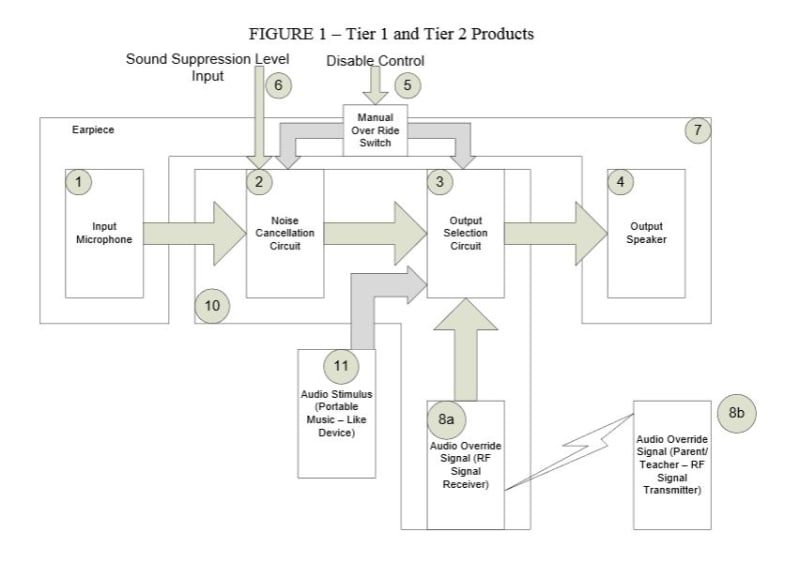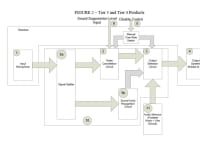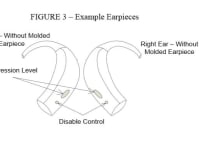Presently, individuals with ASD have difficulty processing all the sensor information that they are subjected to. Current research indicates that, with respect to hearing, a person with ASD is not able to “filter out” what would be considered background noise to a person without ASD. This causes the person with ASD to be easily distracted when they are trying to concentrate on a particular task or, at the other extreme, not respond at all when someone seeks to gain their attention. The latter response is the result of not being able to filter out what is important over what is simply background and therefore choosing to ignore all the sound around them.
Technology currently exists to electronically aid an individual with ASD to greatly reduce the noise that they are subjected to and thereby assist them in dealing with their surroundings. The child could have hearing aids that eliminate all background noises except those that are relevant. Once the background noise has been eliminated, it may prove therapeutic to introduce either a white noise or music background as has been demonstrated by the commercially available products from b-Calm Sound. The relevant signals can be communicated to the individual through either a direct RF link via a device that a parent or teacher could hold or though a sound recognition circuit built into the hearing aids. Once the individual has been alerted to the need to pay attention to someone, they could press a button on one of the hearing aids to disable the noise cancellation. This technique could also be of use in treating individuals with Attention Deficit Hyperactivity Disorder (ADHD) in lieu of medications.
DESCRIPTION OF INVENTION:
It is proposed that technology such as the Bose QuietComfort® 3 Acoustic Noise Canceling® headphones be adapted for with individuals with ASD or various forms of attention deficit hyperactivity disorders.
The adaptations would be as simple as but may not be limited to:
1. Ruggedized and size adaption for users that will range in size from infants to adults.
2. Incorporation of additional circuitry that would allow special categories of sound to pass through unattenuated.
a. A radio frequency link would be added so that teacher or parent’s voice would be clearly heard by the wearer.
b. In a more advanced version the hearing aids would be “trainable” to categories of sound so that it passes though unattenuated. The circuitry for the hearing aids would function together so as to allow the user to be able to determine the direction the pass through sounds came from.
Like this entry?
-
About the Entrant
- Name:Louis Luedtke
- Type of entry:individual
- Software used for this entry:Visio
- Patent status:none








